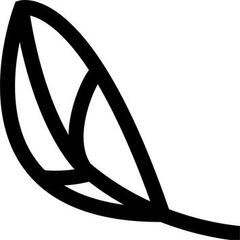Men's waterproof hiking shoes - MH500 blue
Store Availability
Store Availability
BENEFITS

Anatomic design
The suede leather on the forefoot will adapt to your foot shape over time
Lightweight
445g per shoe in size 43
Abrasion resistance
Rubber stone guard at the front and plastic at the back of the foot
Traction
5mm studs shaped for strong traction. Rubber sole with very good grip
Cushioning
Thick EVA foam midsole: comfort/protection from the ground
Waterproof
Waterproof and breathable membrane lining: your feet dry for 6hr in all weather
Fit
Weblock on the last 2 lace loops to hold the midfoot and heel in placeTECHNICAL INFORMATIONS
WHAT IS YOUR HIKING FREQUENCY AND INTENSITY?
- occasional: around ten hikes per year of about 3 to 4 hours’ duration, less than 10km and less than 700m of elevation gain.
- Regular: about 20 outings per year. 4 to 6 hours, 10 to 20 km, 700 to 1200m of elevation gain per outing.
- Intensive: more than 20 times a year. More than 6 hours, more than 20 km, 1200 to 2000m of elevation gain per outing.
Sole: OUTDOOR CONTACT
WATERPROOFING TEST
Then we confirm in the field or under the rain, that the shoe meets its promises.
EXTENDING WATERPROOF PERFORMANCE
We advise re-waterproofing your boots twice a year using a re-waterproofing agent (search for ‘waterproofing’ on our Decathlon website) which will help you restore the original water-repellent qualities and help prevent stains on the outside.
PRODUCT DESIGN: OUR EXPERTISE
WHICH SIZE SHOULD I SELECT?
1. Try on both shoes, standing up, with the socks worn for hiking. 2. Tighten the laces, taking care to correctly balance the tightening.
3. Check two points:
- the heel does not come up before the boot when you walk uphill.
- the foot does not slide and the toes do not press against the front when going downhill.
4. Try on several sizes and models.
Break them in gradually to adapt them to your foot.
CONSEILS D'ACHAT / COMMENT ESSAYER VOS CHAUSSURES ?
1. Essayez les deux chaussures, debout, avec les chaussettes utilisées pour la randonnée.
2. Serrez les lacets en prenant soin de bien repartir le serrage.
3. Vérifiez deux points :
- le talon ne décolle pas avant la chaussure quand vous marchez en montée.
- le pied ne glisse pas et les orteils ne butent pas à l'avant en descente.
4. Essayez plusieurs tailles et modèles.
Utilisez-les progressivement pour les faire à votre pied.
HOW DO YOU AVOID BLISTERS?
- Wear suitable socks
- Tie and tighten your shoes properly.
- Make sure you tighten or loosen your laces accordingly while wearing your shoes, especially before starting a climb or a descent.
- Wear your shoes on a short trip for the first use.
WHICH SOCKS ?
OPTIMISE YOUR BOOT’S CAPACITIES: REPLACE YOUR INSOLES.
1. Improved support: some soles are preformed or reinforced to better support the arch of the foot. 2. More comfort: the insoles can also provide heat and/or cushioning.
3. Longer life: restore the support and comfort of your shoes by replacing the insole each season.
HOW SHOULD YOU LOOK AFTER YOUR BOOTS?
- Remove dry mud with a stiff brush.
- Clean marks using a brush and some warm water
- Leave to dry
- Spray with a re-waterproofing product to restore the water-resistance to the upper.
composition
composition
Tips for storage and maintenance
Storage tips
Restrictions on use
TESTS AND WARRANTY
Test product
Warranty
Videos
Ecodesign approach
With ecodesign, we reduce the environmental impact of our products.
Analysing the product's environmental footprint enabled us to identify the most impactful stages of its life cycle. Thanks to this approach, our design teams were able to develop this product while significantly reducing its environmental impact.
Ecodesign actions on this product
-
 Process
ProcessDope dyed
Product made from 2% dope dyed yarn
Using this mass-dyeing process enables us to reduce CO2 emissions linked to the production of dyed textiles by at least 46% compared to conventional dyeing.
-
 Material
MaterialRubber recycled
Product made from 10% recycled rubber
Using recycled rubber rather than conventional rubber reduces the CO2 emissions linked to the material by at least 8%.
-
 Material
MaterialRecycled polyester
Product made from 5% recycled polyester
Using recycled polyester rather than conventional polyester reduces the CO2 emissions linked to the material by at least 16%.